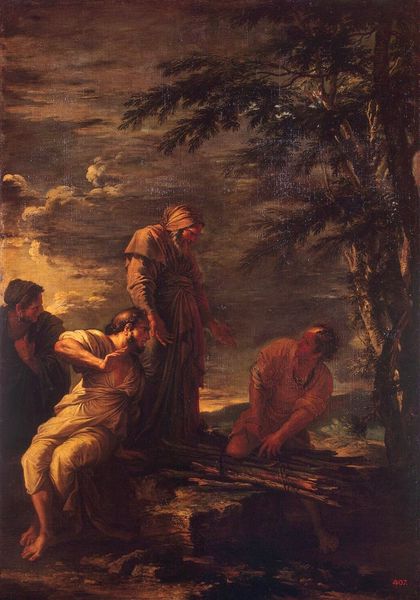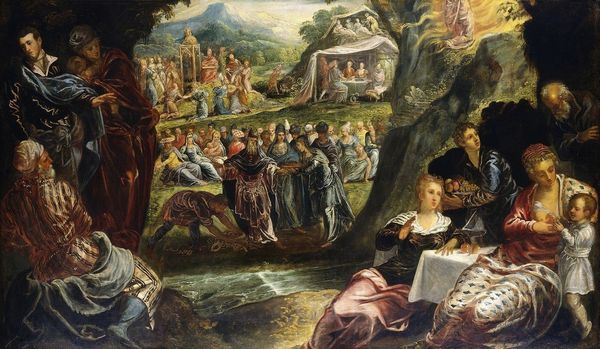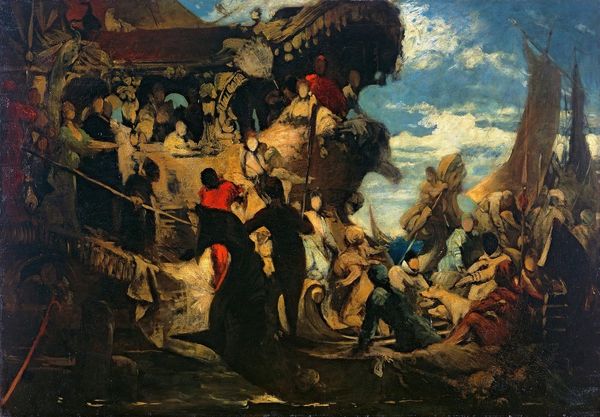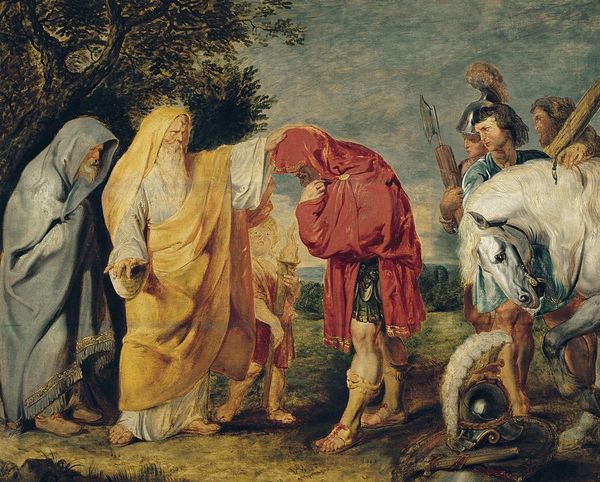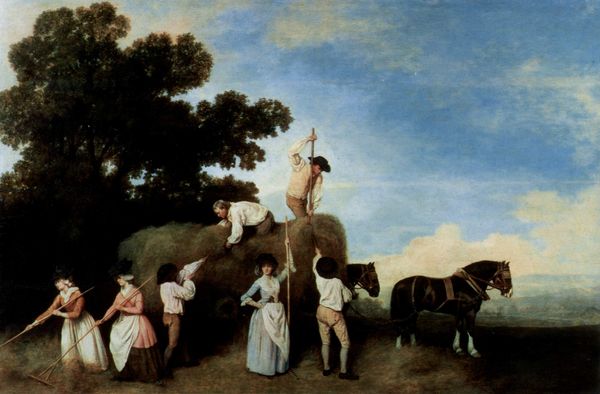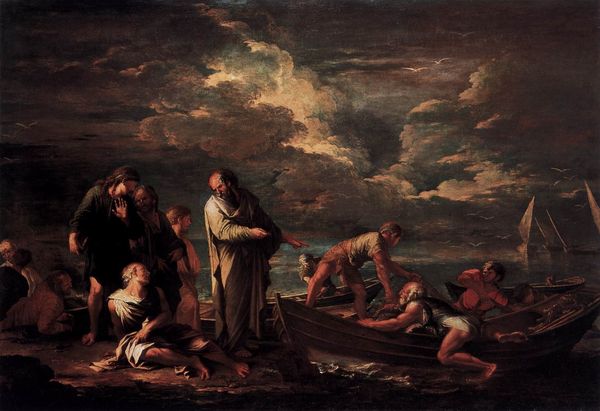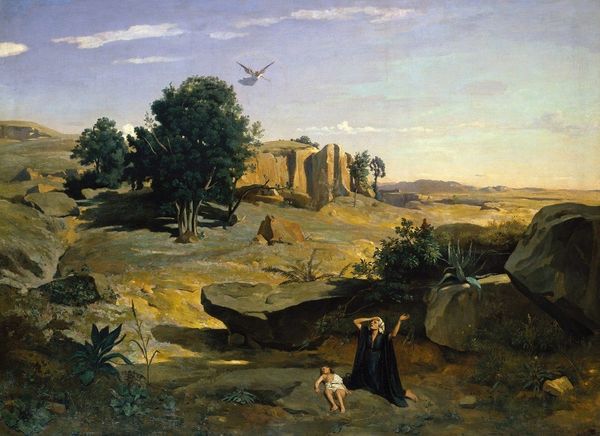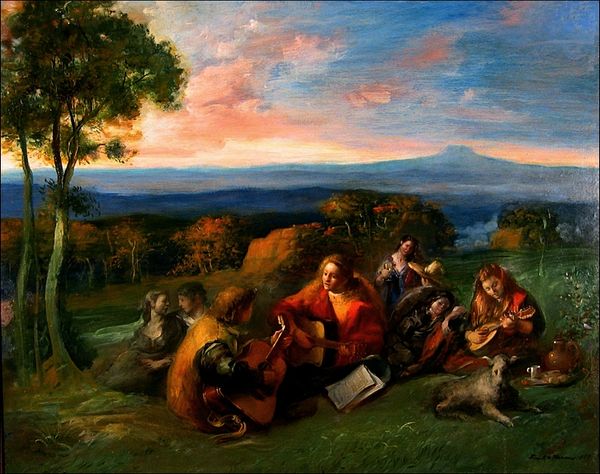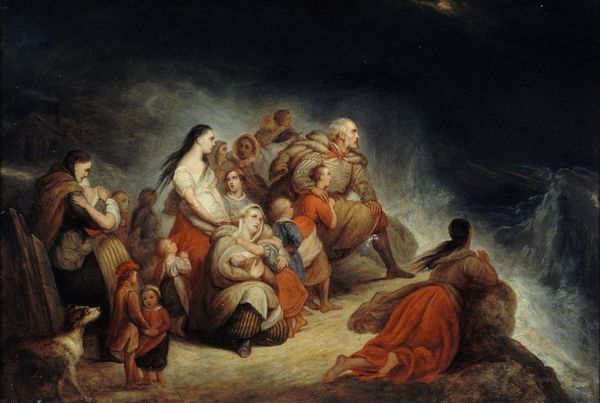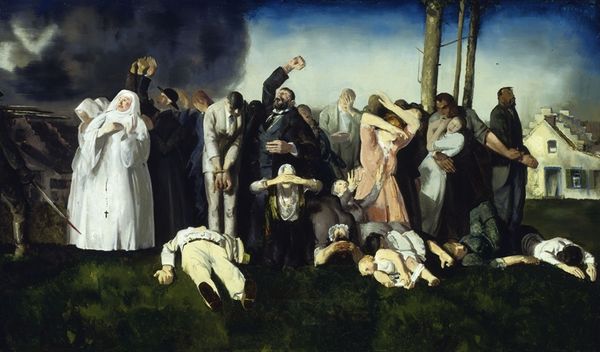
Dimensions: 104 x 150 cm
Copyright: Public domain
Curator: This oil painting, titled “St Anthony Preaching to the Fish,” was masterfully rendered by Paolo Veronese around 1580. The setting presents a friar, preaching to his right into an expansive sea, while a congregation observes him. Editor: The first thing that strikes me is its rather muted palette; it’s melancholic almost. There's a curious tension between the darkness of the landscape and the improbable brightness suggested by the saint addressing the fish. The whole composition leans into this duality of terrestrial solemnity and otherworldly levity. Curator: I’m fascinated by the materiality evident here—the way Veronese, working within the Venetian school's traditions, coaxes such depth and luminosity from layers of oil paint. You can almost feel the fabric of St. Anthony’s robes and smell the salty air of the sea. It showcases an intimate knowledge and mastery of the materials that serve both to instruct and impress. Editor: Yes, the textural quality adds much to the drama, but consider also the subtle storytelling within. St. Anthony, seemingly defying logic, communicating with sea life—it whispers of hidden connections, reminding us that even in the face of absurdity, belief itself becomes a powerful act. Do you think he chose the landscape more as scenery or as a way to invite his audiences to find truth outside the church? Curator: Oh, absolutely. The landscape itself isn't mere backdrop, but rather an active participant in the narrative—a reflection of the internal landscapes within the observers themselves. I love this touch and think of the observers more as stand-ins for the viewer, bridging us with a tale that feels both far removed and profoundly personal. I see it less as a statement about organized religion, and more about humanity finding moments to connect with faith wherever they might find themselves. Editor: Agreed, this ability to invite audiences to reflect is truly amazing, and what a fantastic application of labor, craft, and materials. It becomes something even greater than its ingredients, something eternal. Curator: Well put; It is precisely this dialogue, centuries later, which underscores the piece's enduring potency—an offering of quiet reflection.
Comments
No comments
Be the first to comment and join the conversation on the ultimate creative platform.
